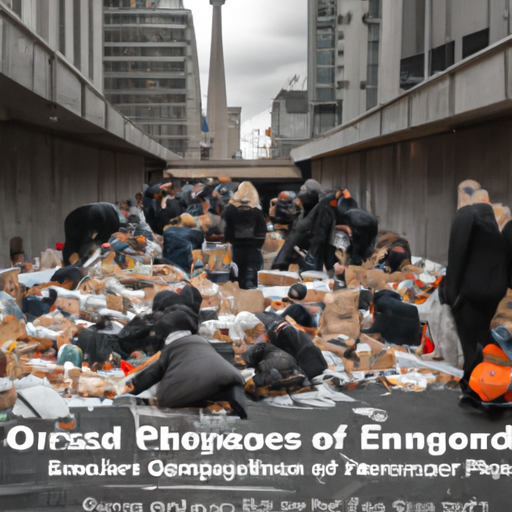The Canadian Opioid Crisis: Current Struggles and Future Efforts
The relentless grip of the opioid crisis in Canada continues to pose unprecedented challenges to civic and community leaders, as they strategize for effective and lasting solutions. In a recent newscast report by Global News, the pressing issue of opioid addiction and its subsequent effects are examined in the Toronto context.
An Unseen Epidemic: The Current Scenario
The report begins by painting a grim picture of the current state of the opioid crisis in Toronto. The city has seen a spike in overdoses and related deaths, placing an increasing strain on health services. The situation is further exacerbated by the high prevalence of homelessness in the city, which often goes hand-in-hand with substance abuse issues including opioid addiction.
Another concerning issue is the rise in crime rates, particularly property crime, as a direct outcome of the opioid crisis. The desperate need for these substances often drives individuals to resort to theft and similar offences. Thus, the ripple effect of the crisis extends beyond individual health and social well-being, impacting community safety as well.
Multiple Dimensions of Combat
Addressing the opioid crisis requires a multi-faceted approach, with the need to engage diverse stakeholders, from health organizations and social services to policymakers and law enforcement. The Global News report outlines key areas of intervention for tackling the crisis:
- Naloxone Distribution: One of the immediate life-saving measures being implemented has been the widespread distribution of naloxone kits, a medication designed to rapidly reverse opioid overdose. This has been especially crucial given the increased potency of illegal drugs currently available on the street.
- Ongoing Legal Battle: The report also highlights the ongoing opioid class-action lawsuit against multiple pharmaceutical companies. The suit alleges that these companies falsely marketed opioids as less addictive than they are, leading to the current crisis. The desired outcome is to channel any settlements towards affected communities, providing them the funding needed for treatment, prevention, and social support programs.
- Shaping the Homelessness Response: As homelessness and opioid addiction are often interlinked, there’s a critical need to address this complex dynamic. Proactive steps are being taken in Toronto to improve the accessibility and quality of shelters, as well as providing much-needed mental health services.
- Improving Public Safety: As the crisis continues to exacerbate crime rates, law enforcement agencies are evolving their methods to ensure community safety. Recognizing the underlying issues that drive property crimes has been key to this effort.
Concluding Thoughts on the Opioid Crisis
As the Canadian opioid crisis worsens, solutions will require concerted efforts across multiple fronts. Reversing this public health emergency involves not only immediate life-saving measures such as the provision of naloxone, but also long-term strategies in law and policy, healthcare, and social support.
It remains vital for local and federal leadership to continue seeking innovative solutions, maintaining a nuanced understanding of those affected by the crisis, and asserting the urgency for change. The health and safety of our communities depend on it. The opioid crisis, while daunting, isn’t insurmountable. With comprehensive, collaborative, and compassionate actions, we can curtail this crisis and prevent further harm.
